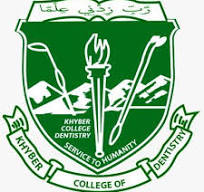PATTERNS OF TRIGEMINAL NEURALGIA IN PATIENTS PRESENTING TO KHYBER COLLEGE OF DENTISTRY PESHAWAR
DOI:
https://doi.org/10.33279/jkcd.v10i02.313Keywords:
pattern, trigeminal nerve, neuralgiaAbstract
Objectives: Trigeminal neuralgia is an extremely painful condition of unilateral face that is very difficult to diagnose. This study was conducted to evaluate the common peripheral branches involved in trigeminal neuralgia.
Materials and Methods: This cross-sectional study was done at Oral and Maxillofacial surgery unit of Khyber College of Dentistry, Peshawar, from May 2018 to December 2018. Total of 266 patients diagnosed with trigeminal neuralgia were included. Pattern was identified on the basis of nerve branch involved. Chi-square test applied, where required, with p<0.05 considered significant.
Results: Out of the 266 patients, 158 (59.4%) were male and 152 (57.1%) belonging to age group 41 to 50 years. Overall right side was involved more commonly with 166 (62.4%) cases. In females right side was commonly involved while in males left side involvement was noted more commonly. Infraorbital nerves (n=117, 44%) and inferior alveolar nerves (n=108, 40.6%) were commonly involved. Association of nerve involved with age group, gender and side of face was statistically significant (p<0.001).
Conclusion: Trigeminal neuralgia is common in males in age range of 41-50 years. Infraorbital nerve is commonly involved in females while in males inferior alveolar nerve is commonly affected. Keywords: pattern, trigeminal nerve, neuralgia
Downloads
Published
How to Cite
Issue
Section
License
Copyright (c) 2020 Bushra Jalil, Umer Ullah, Zainab Shah, Atta Ur Rehman, Muhammad Irfan Khan, Tariq Sardar

This work is licensed under a Creative Commons Attribution-NonCommercial-NoDerivatives 4.0 International License.
You are free to:
- Share — copy and redistribute the material in any medium or format
- Adapt — remix, transform, and build upon the material
- The licensor cannot revoke these freedoms as long as you follow the license terms.
Under the following terms:
- Attribution — You must give appropriate credit , provide a link to the license, and indicate if changes were made . You may do so in any reasonable manner, but not in any way that suggests the licensor endorses you or your use.
- NonCommercial — You may not use the material for commercial purposes .
- No additional restrictions — You may not apply legal terms or technological measures that legally restrict others from doing anything the license permits.










